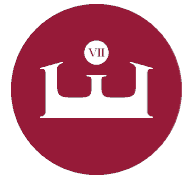
King Edward VI Grammar School, or KEGS, is a British grammar school with academy status located in the city of Chelmsford, Essex, England. It takes pupils between the ages of 11 and 18, ie. school years 7 to 13. For years 7 to 11 the school is boys-only, whereas it is mixed in the sixth form. The headteacher is Tom Carter, who was appointed in the autumn of 2014.

Reading School is a state grammar school for boys with academy status in the English town of Reading, the county of Berkshire. It traces its history back to the school of Reading Abbey and is, thus, one of the oldest schools in England, although it closed for a few years in the 1860s. It is a state boarding school. There are no tuition fees for day pupils, and boarders only pay for food and lodging. Reading is one of the best state schools in the UK according to the GCSE and A-level tables and has consistently ranked in the top ten.

University College School, also known as UCS, is an independent day school in Frognal, Hampstead, London, England. The school was founded in 1830 by University College London and inherited many of that institution's progressive and secular views.

The Royal Grammar School, High Wycombe, is a selective boys' grammar school situated in High Wycombe, Buckinghamshire, England. As a state school, it does not charge fees for pupils to attend, but they must pass the 11 plus, an exam that some primary schools administer. In February 2011, the school became an Academy.

Lady Manners School is an English secondary school located in Bakewell, a market town in the Peak District National Park, Derbyshire. It was founded on 20 May 1636 by Grace, Lady Manners, who lived at Haddon Hall, the current home of Lord and Lady Edward Manners, and has also in the past been known as the Bakewell Grammar School. It is now a member of the Peak 11 group of secondary schools in the Peak District.

Ermysted's Grammar School is an 11-18 boys' voluntary aided grammar school in Skipton, North Yorkshire, England.

Chaucer School is a secondary school with academy status located in the Parson Cross area of Sheffield, South Yorkshire, England. Named after Geoffrey Chaucer, the school became Sheffield's third comprehensive school in 1964, located on two sites separated by a field, one newly built. These were made up of the west building (Top) located on Halifax Road and the east building (Bottom) on Wordsworth Avenue.

Wesley College was a school in Sheffield, South Yorkshire, England, from 1838 until 1905, when it was merged with Sheffield Royal Grammar School to form King Edward VII School.
Arthur Willoughby Barton was a headmaster, academic author and association football referee.

Sheffield Grammar School began in 1604 as "The Free Grammar School of James King of England within the Town of Sheffield in the County of York" in buildings in the Townhead area of Sheffield, resulting from the benefaction of John Smith of Crowland. In the Gazetteer and General Directory of Sheffield and Twenty Miles Round, by William White, published in 1852, the author refers to the "FREE GRAMMAR SCHOOL", noting that it "is a commodious and handsome stone building in Charlotte Street, erected by subscription in 1825, in lieu of the ancient school which stood near the top of Townhead Street. It was founded by letters patent of James I in 1604, and the Vicar and Church Burgesses are the trustees and governors".
Sheffield Collegiate School began in 1836 in new buildings on the corner of Ecclesall Road and Collegiate Crescent. The school enjoyed academic success but lacked sound finances and was taken over by Sheffield Grammar School in 1884, to become Sheffield Royal Grammar School (SRGS) in 1885.
Nathaniel Langford Clapton, the only son of Nathaniel Clapton, ironmonger's manager, of St Dunstan's Crescent, Worcester, was a prominent schoolmaster.
Stanley Ronald Kershaw Gurner M.C. M.A. (1890–1939) was a headmaster and writer who was born in London.

King Edward VII Academy is a large, mixed comprehensive secondary school in Gaywood Road (A148), King's Lynn, Norfolk, England with around 1,300 pupils, including about 300 in sixth form education. Prior to the school year beginning in September 1979, KES was an all-boys state grammar school.

King Edward VI College is a sixth form college located in Nuneaton, England, in Warwickshire. Currently, it teaches subjects in preparation for A-level examinations, for students generally aged sixteen to eighteen. The college presently accommodates approximately 1400 students from Warwickshire, West Midlands and neighbouring counties.
Retford Oaks Academy is a coeducational secondary school and sixth form located in the market town of Retford, Nottinghamshire, England, situated in the district of Bassetlaw.
King Edward VII School is a premier secondary school for boys located on Jalan Muzium Hulu, in Taiping, Malaysia. Formerly known as Central School, it is one of the oldest schools in Malaysia. The school is widely known as by its initials "KE7". The students are known as Edwardians or Tigers and, as alumni, Old Edwardians.
Francis Ernest Brown (1869-1939) was headmaster of Geelong Church of England Grammar School, Victoria, Australia from 1912 until his retirement in 1929.
Henry John Chaytor (1871–1954), British academic, classicist and hispanist, was Master of St Catharine's College, Cambridge from 1933 to 1946.

The Western Bank Campus is the main campus of the University of Sheffield. It lies one mile to the west of Sheffield city centre and is bounded by Upper Hanover Street to the east, Glossop Road to the south, Clarkson Street to the west, and Bolsover Street to the north. The campus includes Firth Court, Alfred Denny Building, Western Bank library and Arts Tower, Geography and Planning building, Bartolomé House, Dainton and Richard Roberts Buildings, the Sheffield Students' Union building, the Octagon Centre, Graves Building, Hicks Building and the Information Commons. The nearest motorway is the A57.













